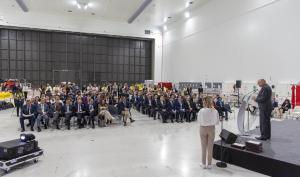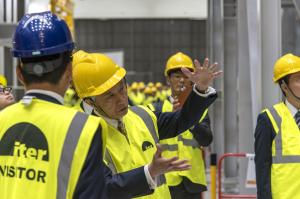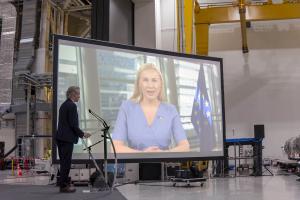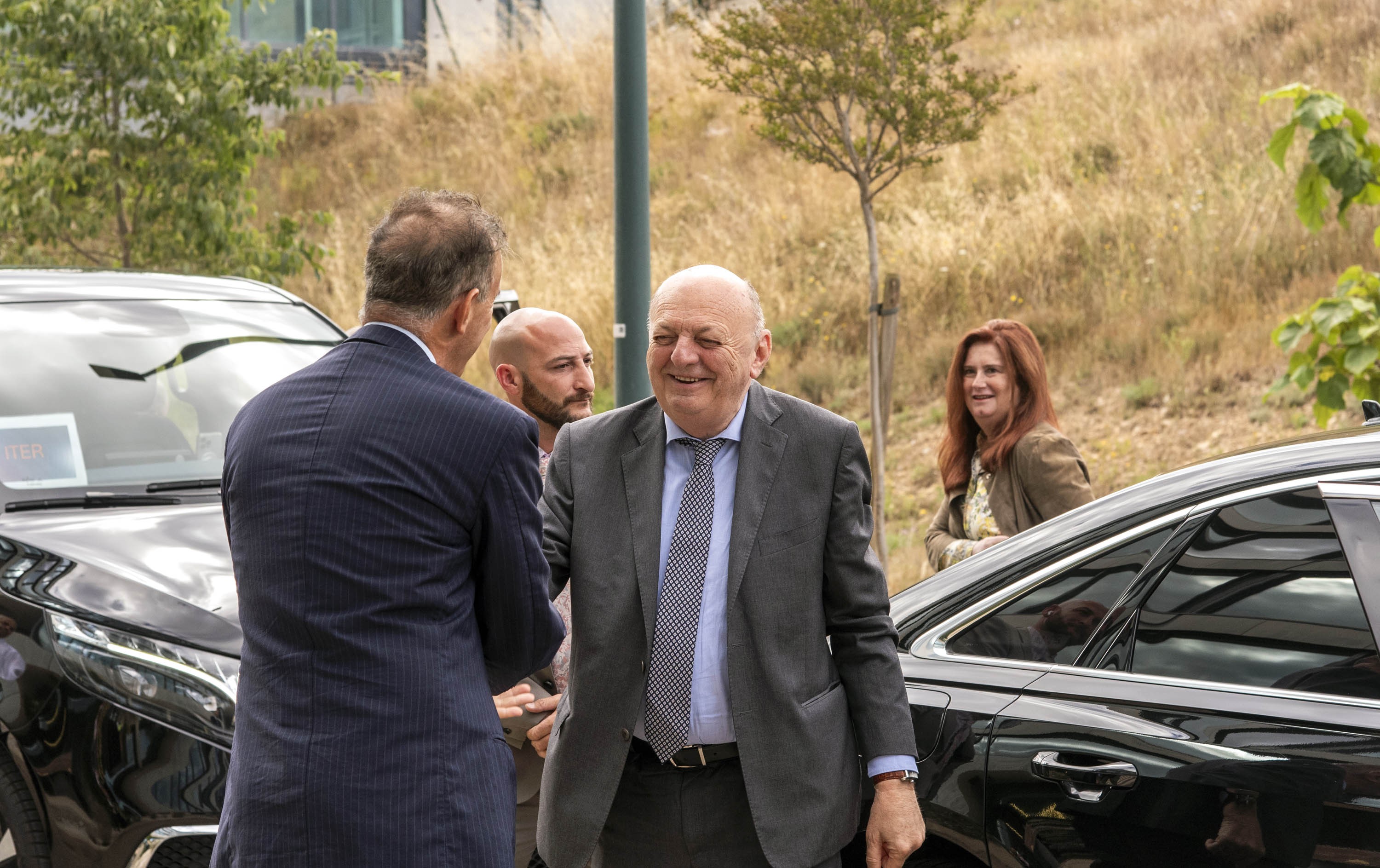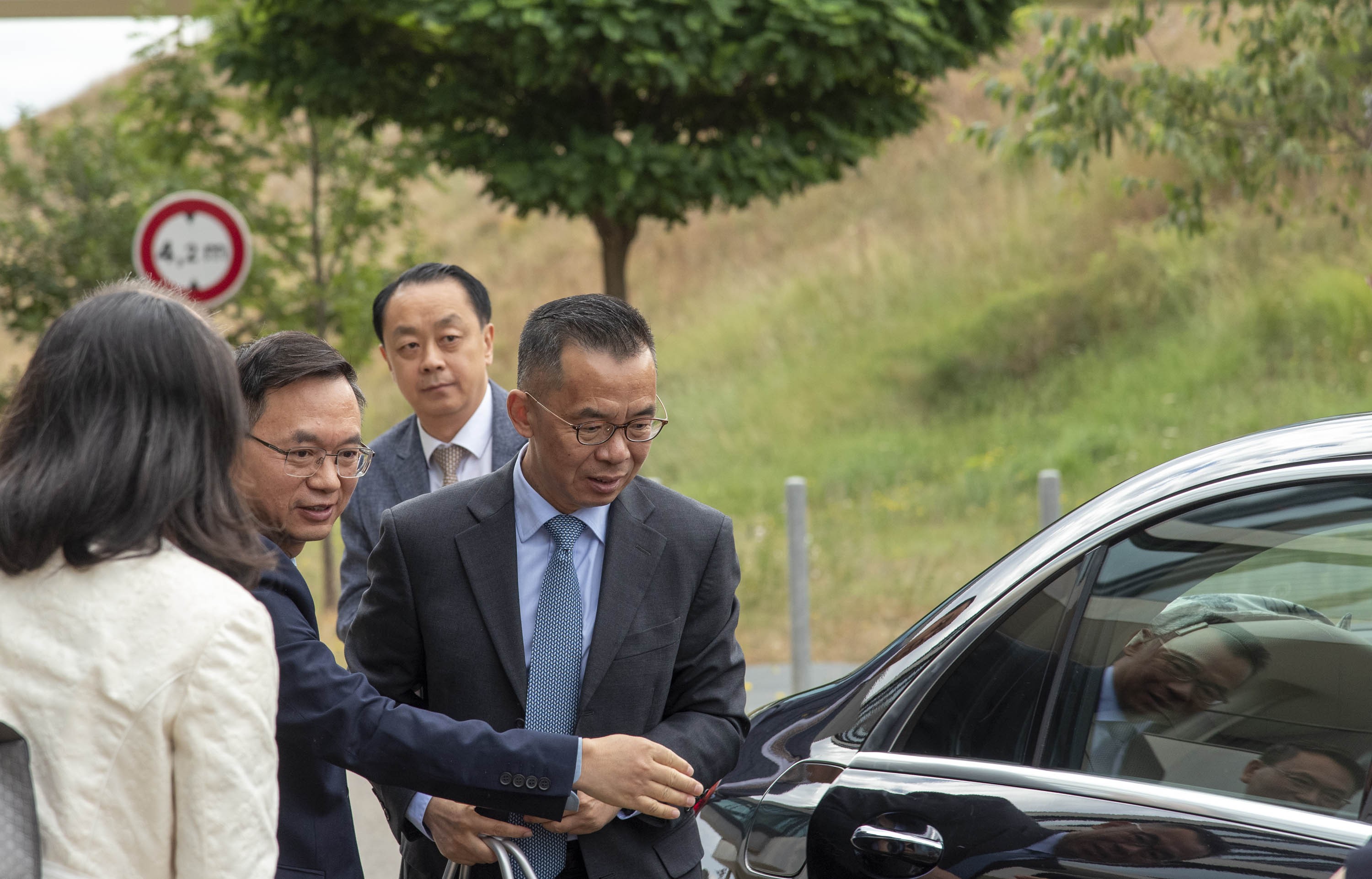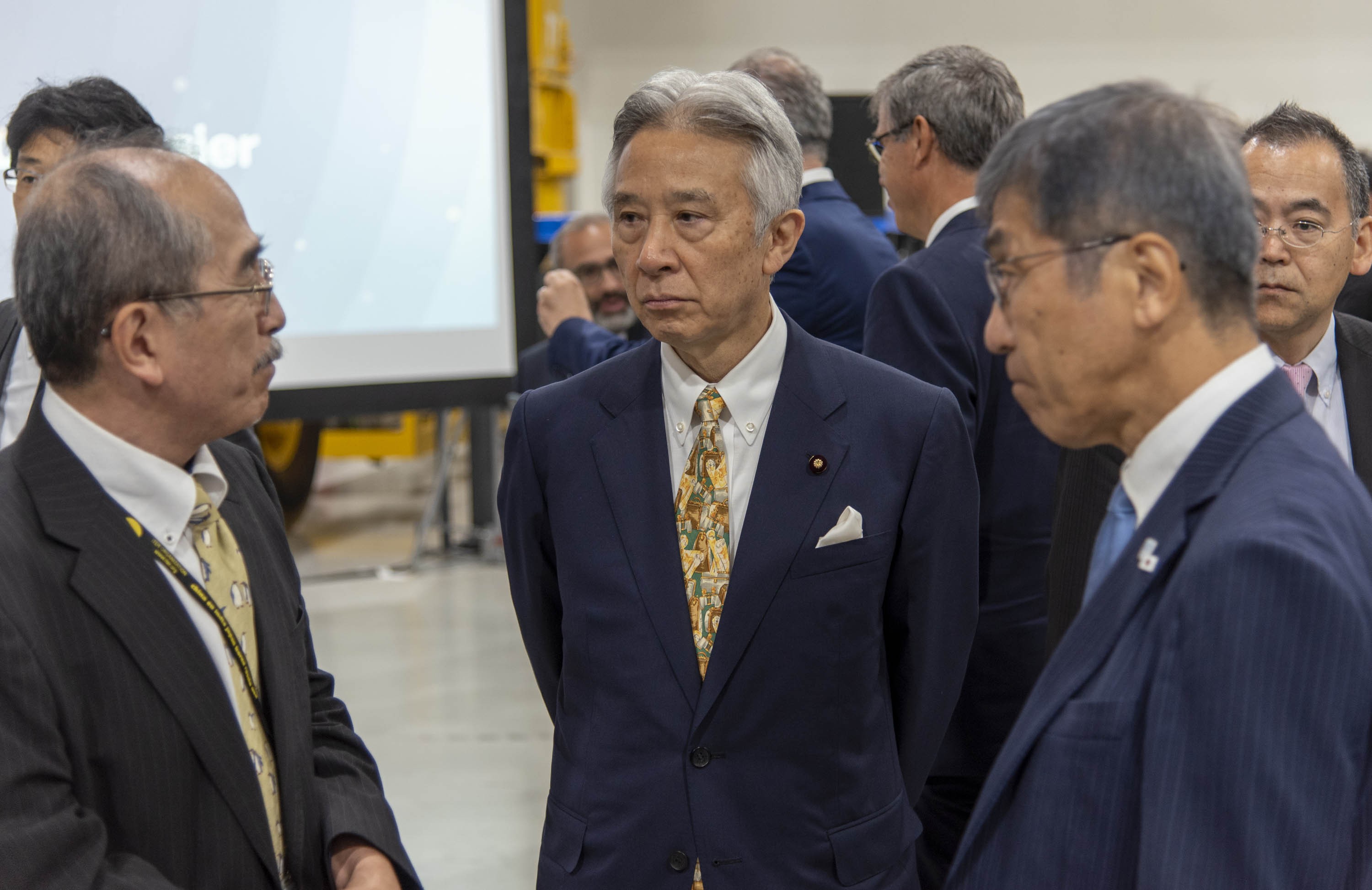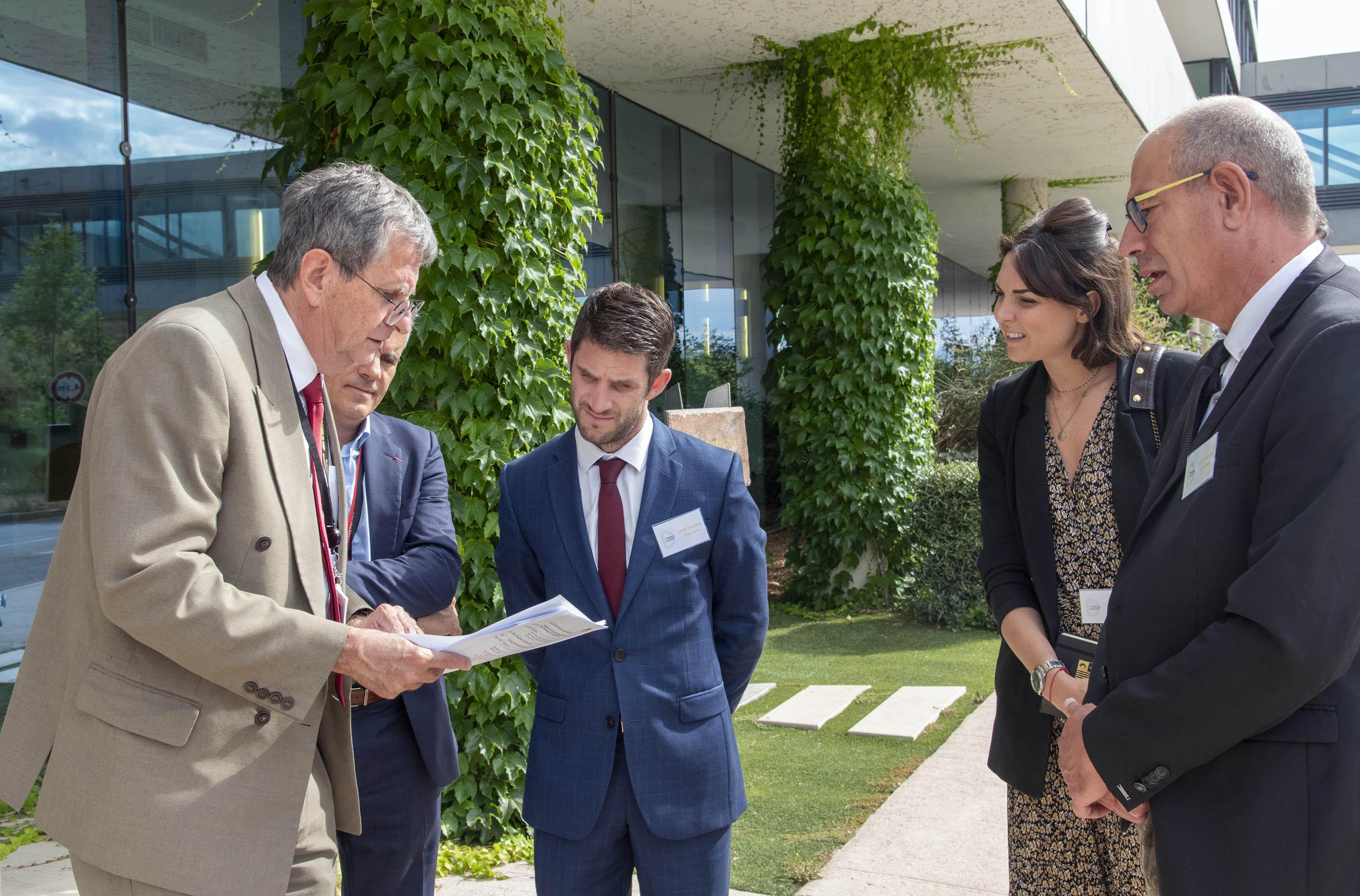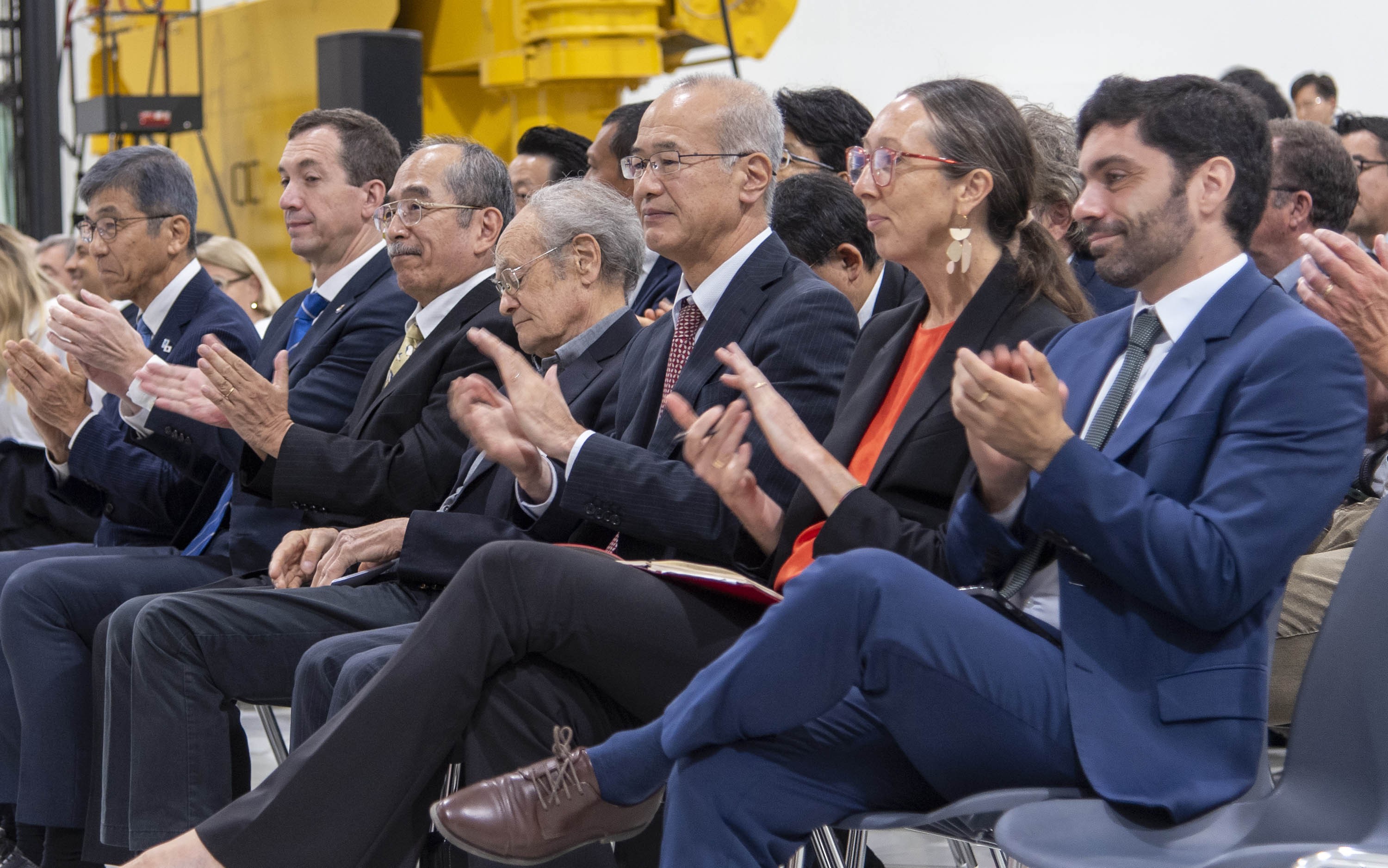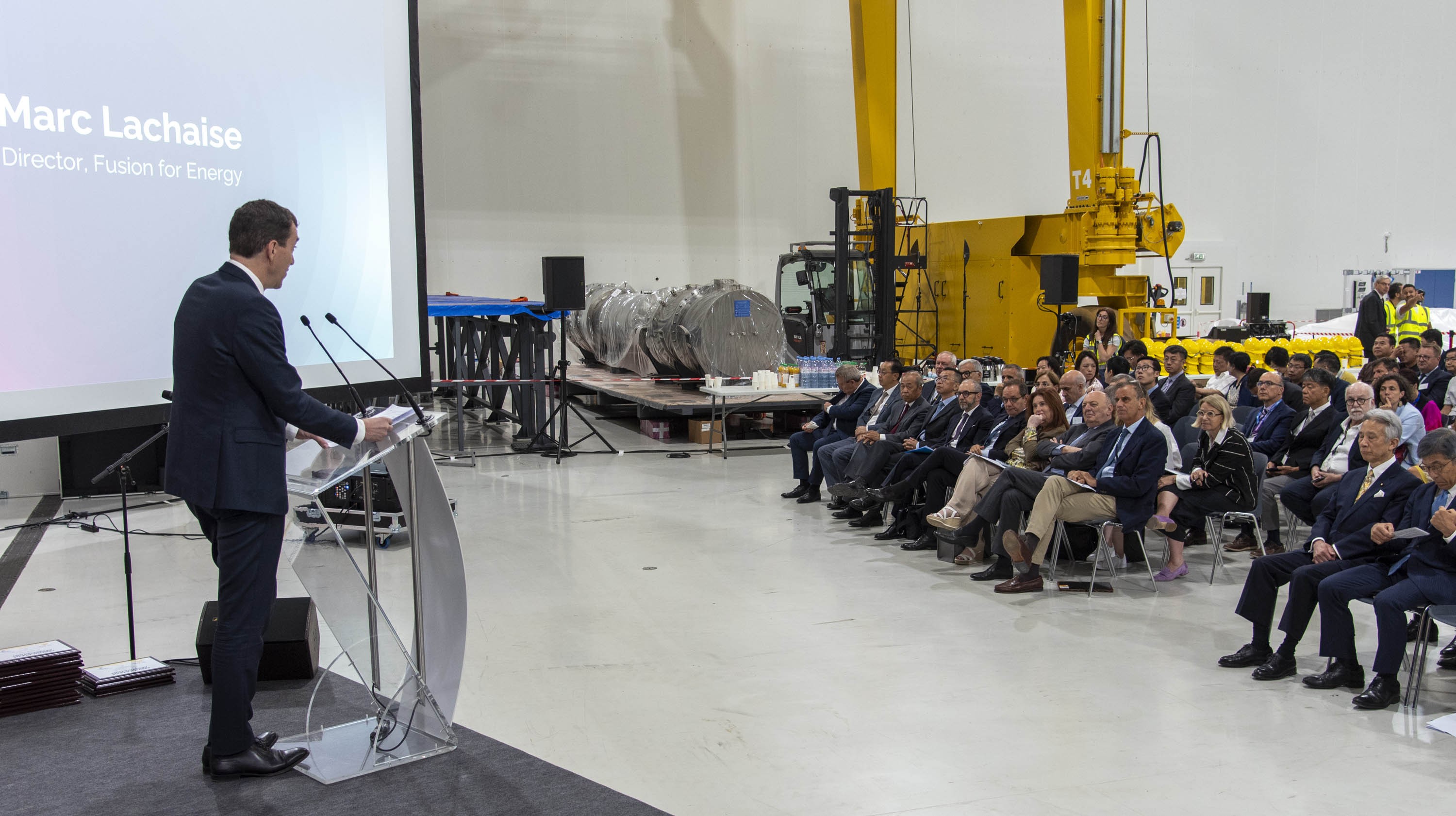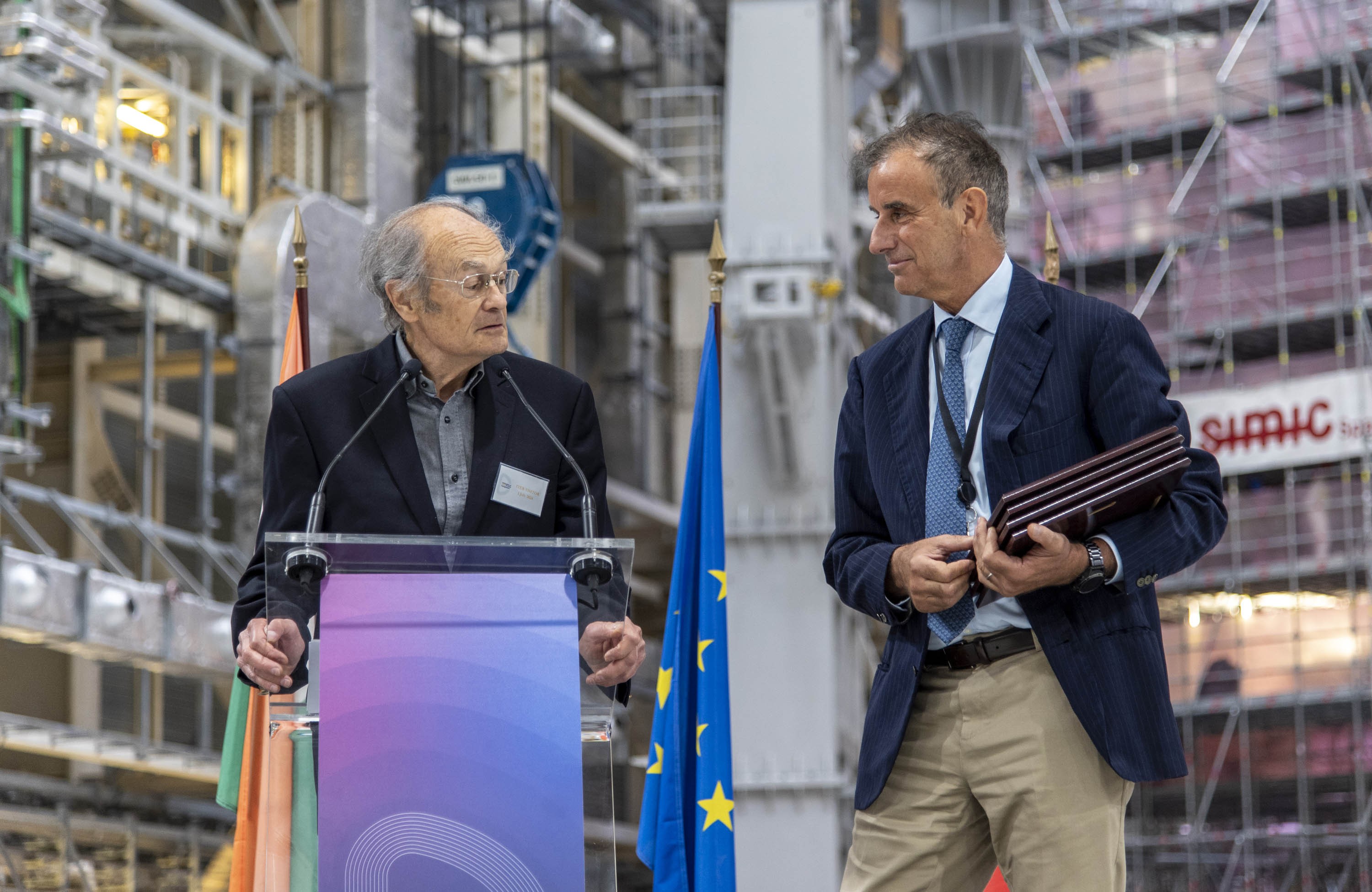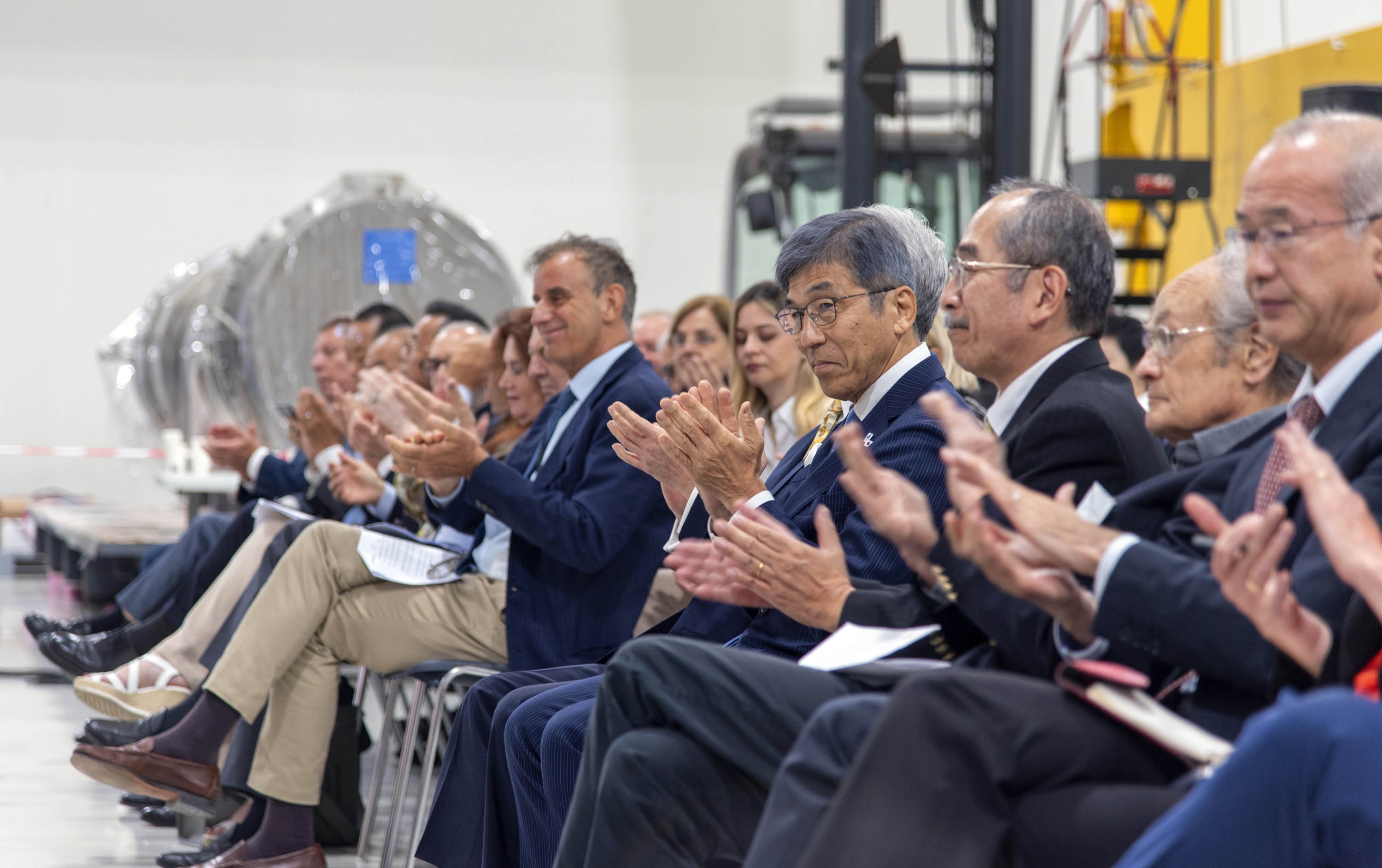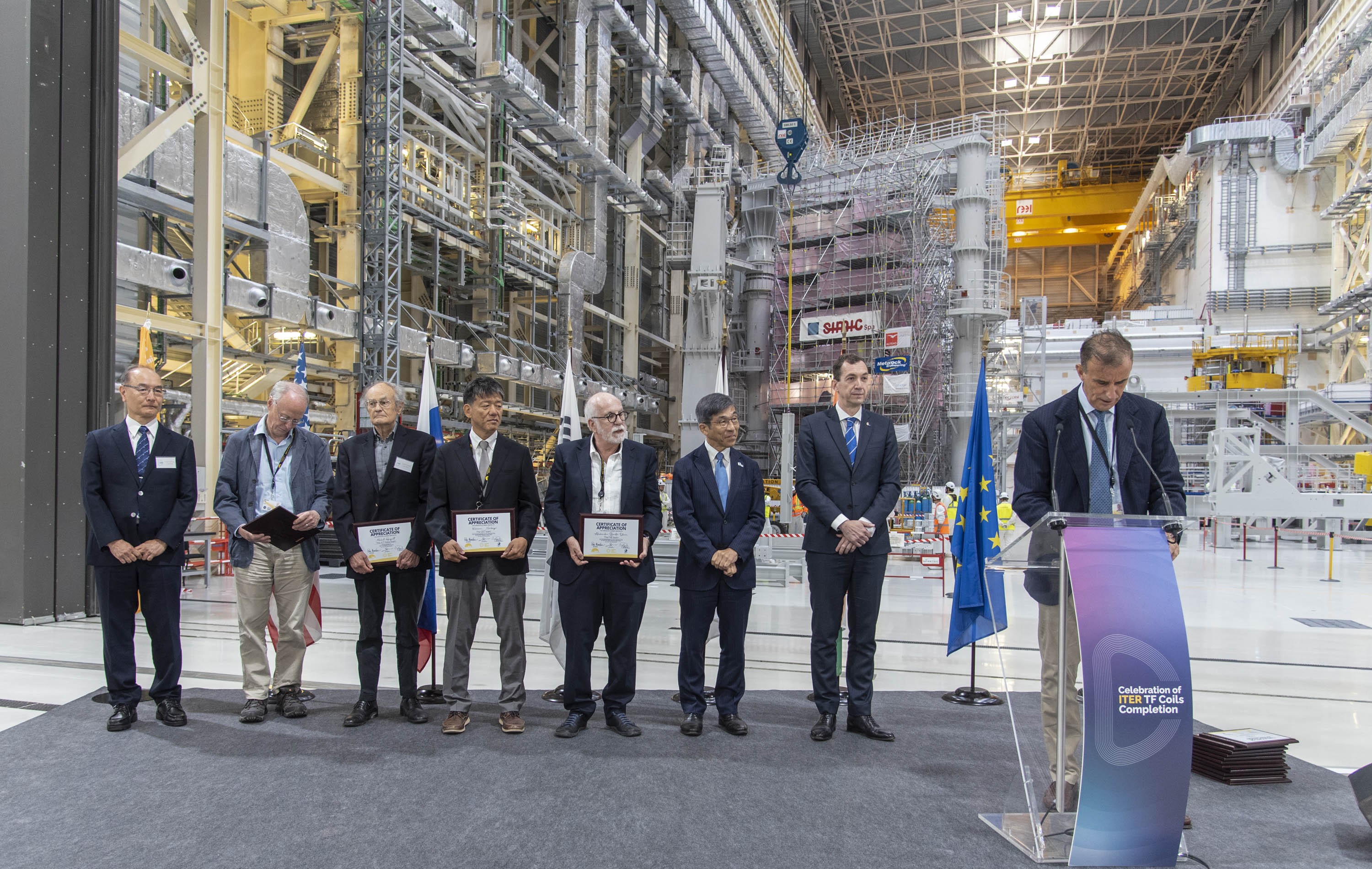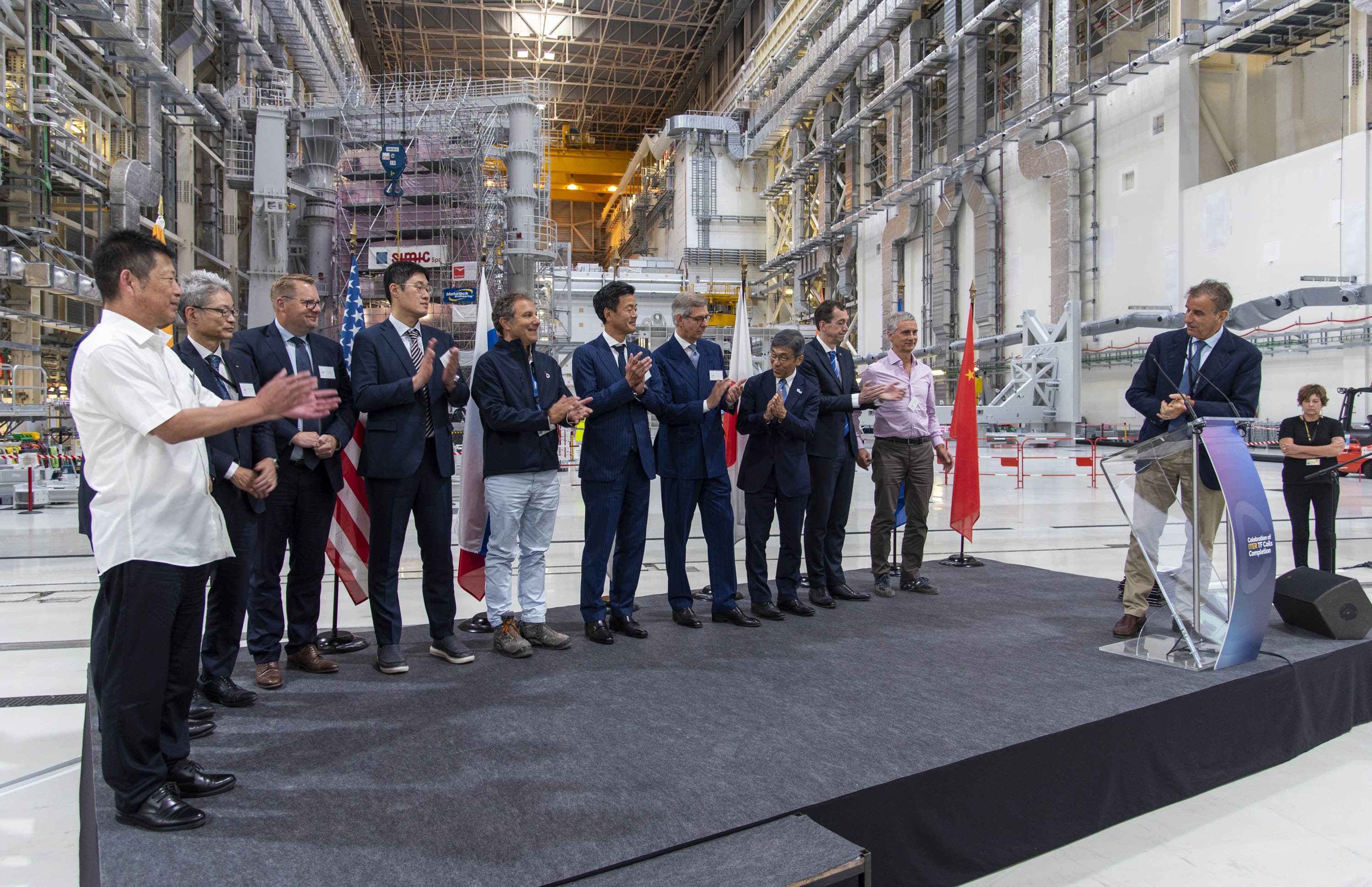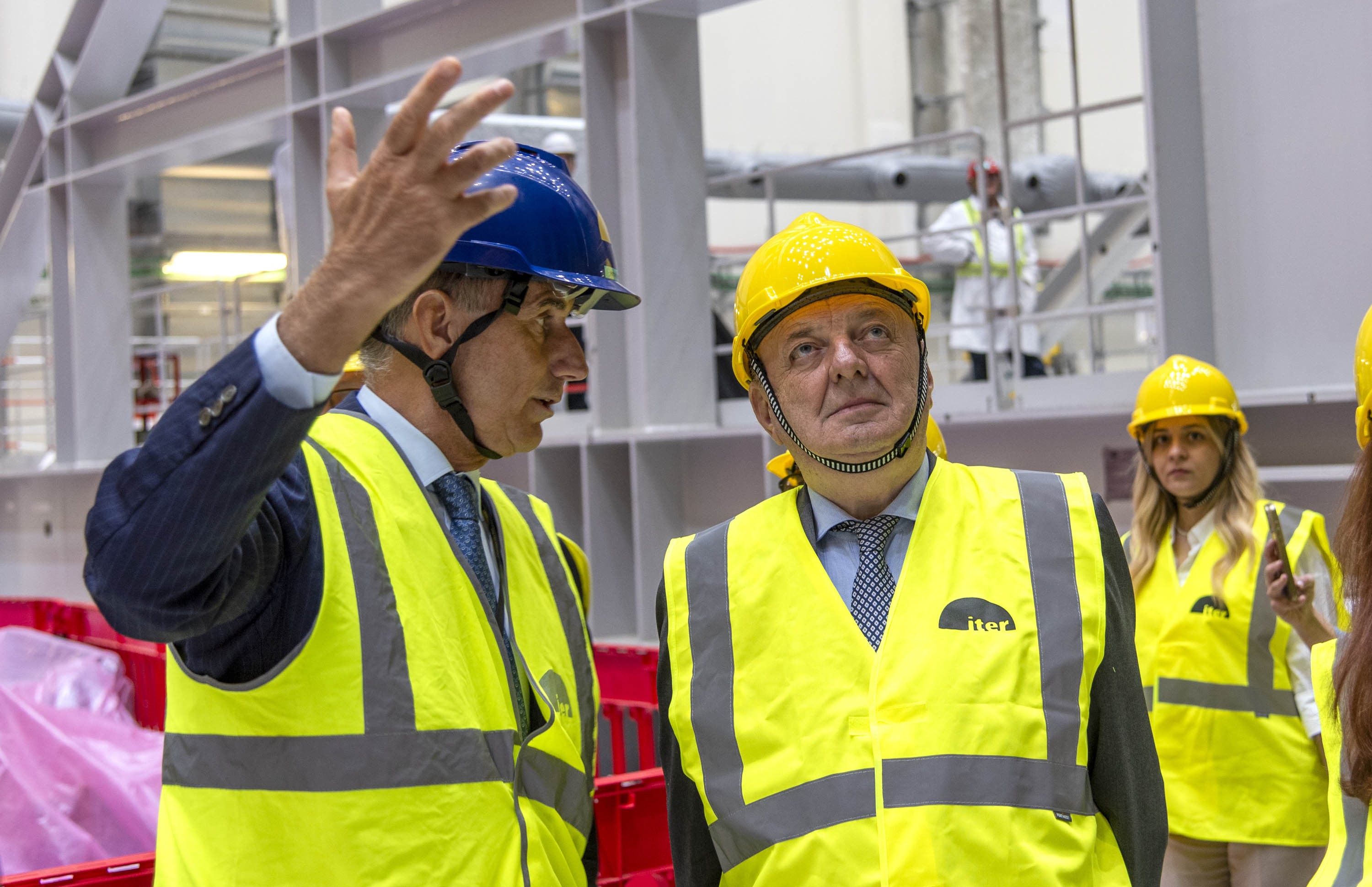"A good day for the world"
A little before 2:00 a.m. on 17 April 2020 a powerful transport trailer, accompanied by dozens of technical and security vehicles, passed the gates of the ITER site. On the trailer's flatbed, tightly wrapped in protective material, sat a massive D-shaped load—the first of the 19 toroidal field coils (including one spare) required for the ITER tokamak.
The nature of the component was familiar. For close to ten years we had watched it slowly come to life, from the early manufacturing of the superconducting niobium-tin strands, to the cabling and jacketing of conductor and the machining of radial plates, up until the final insertion into steel cases. But being confronted by that mighty presence was a whole different experience. The size of the component brought home just how exceptionally large the ITER tokamak would be.
This first toroidal field coil (TF9) was procured by Europe and had travelled a relatively short distance from its manufacturing site in Italy. Eight days later, on Saturday 25 April, a second coil (TF12) arrived at the ITER site, having completed a 10,000-kilometre journey from Japan. Over the following three-and-a-half years all 19 coils (10 from Europe, 9 from Japan) were to be faultlessly manufactured and delivered. It is this unique industrial and logistical achievement that was celebrated on Monday 1 July, in the presence of some of the "historical figures" of the great toroidal field coil venture and the high representatives of the ITER stakeholders involved in this strategic project-within-the-project.
Indeed, as ITER Director-General Pietro Barabaschi said in his opening address, the 17-metre-tall ITER toroidal field coils "look like science-fiction." Forty times the mass of CERN's Atlas magnets, presently the largest operating magnets in the world, they represent "a huge step forward" in superconducting magnet technology. "Created by human minds and hands," these technological marvels are more than "the backbone of the ITER machine." Having brought together "essentially all the ITER Members" in their design and fabrication process they represent "the very soul" of the project.
International collaboration, "the integrated effort," and the "technological breakthroughs" that led to the successful procurement of the 19 ITER toroidal field coils was also highlighted by Masahito Moriyama, the Japanese Minister of Education, Culture, Sports, Science and Technology (MEXT), and Gilberto Pichetto Fratin, the Italian Minister of Environment and Energy Security. Both placed the first-of-a-kind achievement in the broader context of fusion's "potential to solve global energy and environmental problems simultaneously" (Moriyama) and a "future of clean, safe and practically inexhaustible energy" (Pichetto Fratin).
"A good day for the world" is how Kadri Simson, the European Union Commissioner for Energy characterized this first day of July. "The toroidal field coils have long been considered amongst the most complex components to manufacture," she said in a video address. "In Europe, under the leadership of Fusion for Energy, more 40 companies and 700 people were involved in coil fabrication. Some of the companies involved now apply the technologies and know-how they developed for ITER to other projects. This demonstrates the added value of working for ITER."
For the Chinese Ambassador to France, Shaye Lu, who recalled the signature of the conductor Procurement Arrangement in 2008 and its completion eight years later, "ITER [...] embodies humanity's hope for peace and sustainable development. It is the "little sun that will shine upon the shared future of the human community."
The scope and complexity of manufacturing the ITER toroidal field coils, the multiple technological and organizational challenges faced by the industry in Europe and in Japan were perfectly illustrated by the 8-minute film that was projected to the audience. As fabrication processes unfolded, from strands to cable-in-conduct conductor, from "double pancakes modules" winding to case insertion, from final machining to shipping and delivery, one took the full measure of what had been accomplished.
Fabrication of the toroidal field coils "required top expertise, large facilities with special equipment, a lot of coordination between the different interfaces and a procurement strategy that could provide all the above," said Marc Lachaise, Director of the European Domestic Agency Fusion for Energy. "From the outset, it could have seemed impossible... Our teams made it possible."
Like Fusion for Energy in Europe, QST—Japan's National Institutes for Quantum Science and Technology—organized the Japanese procurement of the ITER toroidal field coils. Its President, Shigeo Koyasu, expressed his gratitude to "all the previous ITER Director-Generals" and to all the men and women of ITER whose efforts are contributing to the realization of "a peaceful and prosperous society."
A few of these emblematic contributors, whether engineers or scientists, logistics specialists or industry representatives, were then called on stage. First among them, Michel Huguet was introduced by Director-General Barabaschi as "the father of these coils." The physicist, who had joined the French fusion program in 1969 and had headed for more than ten years (1992-2003) the ITER Joint Work Site in Naka, Japan, reminded the audience that the achievement that was being celebrated originated 32 years ago, with the launch of the Engineering Design Activities (EDA), the founding moment in the long history of the project.
The presence onstage of Kiyoshi Okuno, Neil Mitchell, Alessandro Bonito Oliva and Norikiyo Koizumi was a potent symbol of what Michel Huguet once called the "multi-generation chain of fusion builders," which he compared to "medieval cathedral builders" engaged in a project of "unprecedented timescale." On 1 July, the ITER cathedral was far from completed, but 18 of its key elements were. And that was definitely worth celebrating.
See a video on the making of the ITER toroidal field coils here.
See a video of the event here.

